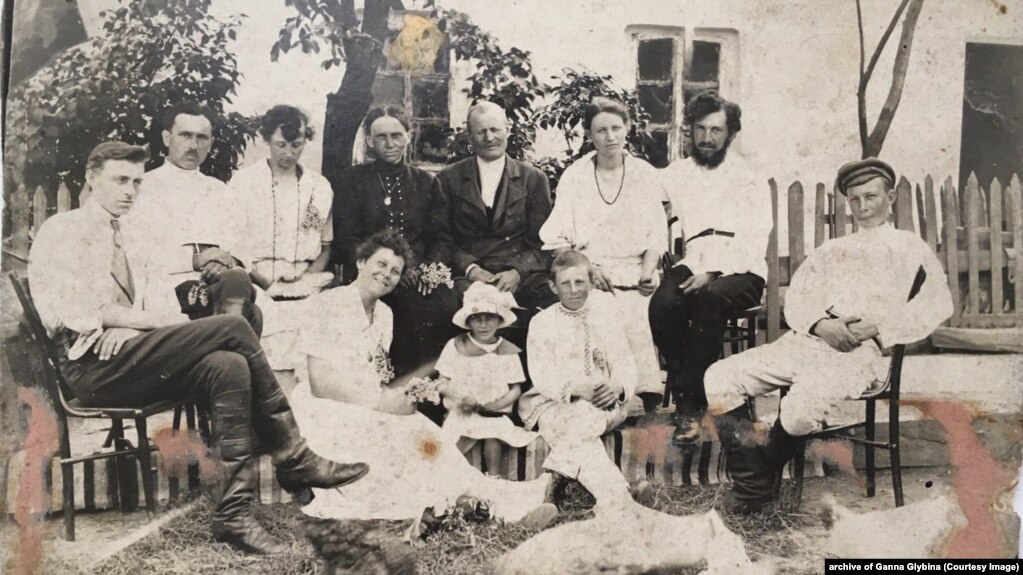The resolution formally enshrined Stalin’s directives, voiced by the Soviet leader on January 21, 1930 in his appeal ‘On the policy of liquidation of the kulaks as a class’.
“In order to eliminate the kulaks as a class, it is necessary to openly break their spirit and resistance, and deprive them of the sources for further existence and development. The party’s current policy in the towns and villages marks a new procedure for eliminating the kulaks as a class,” said Joseph Stalin, secretary general of the Central Committee of the Communist Party of the USSR.
Stalin’s first objective was to rid society of the peasantry, which concealed ‘capitalist elements (kulaks)’, and was thus irrevocably hostile to the regime. Dekulakization consisted in expropriation, eviction of entire families, deportation of millions of farmers, and, in the event of resistance, physical annihilation.
This Resolution defined dekulakization quotas, i.e. first and second categories for each region or republic of the Soviet Union. The first category kulaks, defined as ‘activists, engaged in counter-revolutionary activities’, were to be arrested and sent to labour camps after a brief appearance before the so-called judicial ‘troika’. The most ‘dangerous’ activists were to be sentenced to death while second-category kulaks, defined as ‘exploiters’, but less actively engaged in counter-revolutionary activities’, were to be deported to distant Siberian regions. Dispossessed, deprived of their civic rights, deported, exiled to remote areas of the USSR, these kulak families were assigned to ‘special villages’ run by the OGPU (NKVD as of 1934).
In January 2020 (90th commemoration of the total extermination of private property in the USSR), Radio Liberty and the National Museum of the Holodomor Genocide launched a special project – ‘Dekulakization: how the Stalinist regime destroyed Ukraine’s free peasant class’. Hundreds of testimonies about dispossessed and persecuted families have been sent to Radio Liberty’s editorial office and been reprinted online.
Here is another letter received by Radio Liberty.
From Hanna Hlybina
From my grandmother and some memoirs written by relatives, I learned that my great-great-grandfather Yakiv Mykhailovych Kyrpenko was born in 1867 in the village of Tiahynka, Kherson Governate. Yakiv was 10 years old when he was orphaned, so a local priest took the young boy into his care.
At the age of 21, Yakiv married an orphan called Agafiya, daughter of the village clerk. The young family worked hard on the priest’s farm. Their first child Yuriy was born in 1889, followed by my great-grandmother Hanna (1891) and Nataliya (1893).
There was a state wine shop in the village, and the priest recommended Yakiv as manager of this store. On the estate, which belonged to the Kyrpenkos, Yakiv built a 5-room house; two of the rooms were intended for a winery. He added an outbuilding with a living room and kitchen, another annex for storage of goods, a stable, and a cowshed. In the yard, there was a well with cold drinking water.
To deliver goods the family bought a horse with a cart. Trade flourished, turnover increased, and the family grew and prospered. There were 12 children in the family. All of them studied and graduated from a 4-year school in Tiahynka, and then had the opportunity to study further in different educational institutions in Kherson.
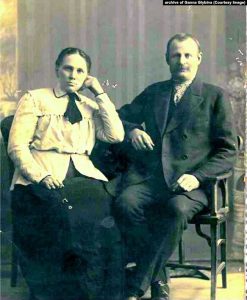
My grandmother told me that everyone had household responsibilities. They grew abundant crops of watermelons and melons, and were actively engaged in sheep breeding. Thanks to hard work, the family managed to build a small flourishing farm.
In February 1920, the Red Army invaded and took over southern Ukraine. Members of the Revolutionary Committee “occupied the Kyrpenko house and transformed it into their headquarters”; the Kyrpenko family moved into one of the outbuildings. The store was closed; trade and commerce declined.
Times were difficult, but the family bonded together and somehow survived until one day:
“… alarming news arrived from Tiahynka; Yakiv Mikhailovich and Agafiya Yakivlivna are deprived of the right to vote, and are being threatened with dekulakization.”
Yakiv was left in Tiahynka; he managed to sell some things from his farm, and was forced to hand over most of the family possessions to the collective farm.
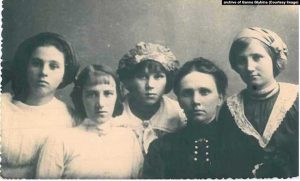
In the early 1930s, my great-great-grandfather, a hard worker and an intelligent man, was left a widower. Everything that he had built was taken away from him.
We don’t know why he was arrested, but we presume that most likely, he was denounced by one of the neighbours. In 1937, Yakiv Kyrpenko died in agony in the Tiahynka prison hospital, tended by a nurse who had studied with his daughter.
Yakiv’s heritage
Yakiv’s eldest son Yuriy studied at Kherson Commercial School. In 1914, he was drafted into the army, graduated from a military school, and served as captain during World War I.
After the proclamation of the Ukrainian National Republic in 1918, he served as commander of the Varta guards in the town of Oleshky, Kherson Oblast. Then he disappeared without a trace…
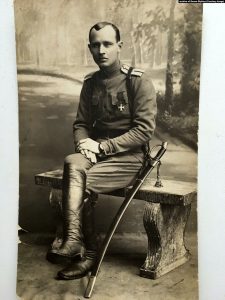
Yakiv’s daughters Nataliya and Oleksandra graduated with a teaching degree from the Faleyevska Private Gymnasium. In 1922, Nataliya married a successful local veterinarian Mykola Roshchin. In the 1930s, he was supposed to take a higher position in Mykolayiv, but someone denounced him, saying that a peasant’s cow had died after treatment. He was exiled to Siberia “without the right of correspondence”. In the mid-1970s, his family received a notice reporting when and where Mykola Roshchin had been buried.
Another daughter Melaniya Yakivna (1897) also met a tragic fate. She fell in love with an intelligence officer, Vasyl Kibalchych and, without receiving her parents’ blessing, secretly married him.
After the Civil War, Vasyl and his wife moved to Novhorod-Siversky, where Vasyl discarded his uniform and ideals, and was ordained a priest at the insistence of his father. In 1929, Vasyl Kibalchych was arrested and exiled to Siberia. When his wife Melaniya received news that he had started a new family in exile, she fell gravely ill and passed away.
My grandmother, Liudmyla Yukhymivna Kyrpenko-Shymanska (1915), lost her mother in 1920 and spent her childhood in the midst of the Kyrpenko family.
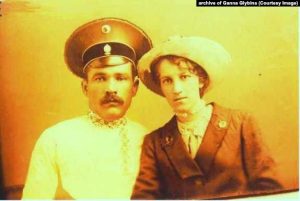
In 1932, Liudmila was a student of the Kherson Agricultural Technical School. But, it was during those years that Stalin launched the Holodomor, the Great Famine in Ukraine. According to my grandmother, Kherson region had a very promising harvest of grain, but all the crops were confiscated by the Soviet authorities, loaded onto foreign ships, and what remained was dumped into the waters of the port.
The students were transferred to a more prosperous technical school in Artemivsky Raion in the Donbas. The young people were herded into freight cars and set out on a five-day trip with no food and little water.
Grandmother Liudmyla’s life was not easy: typhus, war, death, looting and burnt homes, the 1947 famine… but that exhausting trip in those freight cars marked her for life.
“I saw instances of cannibalism and how people lay silent and died one after the other,” she said with tears in her eyes.
When the director of the technical school met the half-dead students at the station, he wept openly and ordered them to be fed and washed.
So, Liudmyla became a student at Kamyansk Technical School. She was a good student, and joined the local Komsomol.
One day, at a Komsomol meeting, it was announced that the director of her school, Serhiy Podoliak, was an “enemy of the people”. Liudmila and several other students came to his defence. The local administration then issued resolution No.465 dated 20.05.1934:
“Due to simulation in the classroom, which has led to very low academic achievements, and for dissimulating the social origin of students’ families, student Liudmyla Shymanska is hereby immediately expelled from the school. All bed linen and accessories must be returned to the commandant. Director of the Technical School – Shepelev.”
One of the many tragic stories about the victims of dekulakization and the Holodomor in Ukraine. To be continued…
Researchers and historians affirm that after the declassification of the archives of the Ministry of Internal Affairs it became possible to investigate tens of thousands of dekulakization cases. Descendants of dispossessed families can submit inquiries to the local branch archives of the Ministry of Internal Affairs and gain access to documents.
Please send all available photos and documents. Please write to: [email protected]
TO BE CONTINUED…

